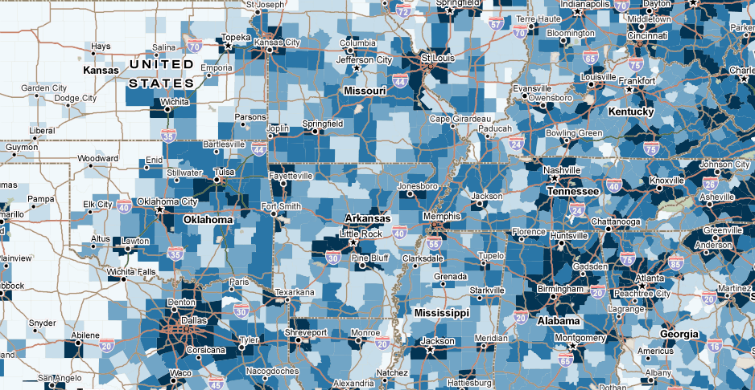New Data Now Available on People with Disabilities

Data
Percent People with a Disability
Source
Find on PolicyMap
- Demographics
- People with Disabilities
- People with Disabilities
- By Age
- By Employment Status
- By Poverty Status
- By Disability Type
- Federal Assistance
- People with Disabilities
Make sure to check out PolicyMap’s data on people with disabilities. The 2011-2015 American Community Survey reveals that over 38 million Americans, or about 12% of the population, have one or more disabilities, amounting to one of the largest minority groups in the entire nation. You can explore several different dimensions of disability data on PolicyMap, including: Age, Employment Status, Poverty Status, and Disability Type. The data is available across a wide range of geographies, from census tract to state.
It appears that rural counties generally suffer from higher rates of disability than counties in metropolitan regions, and the South has elevated rates of disability compared to other regions of the country. Those with disabilities in rural regions are likely to have less accessibility to medical service providers, or lack abundant employment options that could accommodate their particular disability. Meanwhile, in many urban areas, it appears that disability rates are highest in areas stricken by poverty, suggesting a clear relationship between the two indicators.
The map displayed below shows the Estimated Percent of Unemployed People with a Disability by county in 2011-2015 in areas of the Midwest and South. Pockets of high concentration of unemployed individuals with a disability are notable in rural regions of the Upper South, but are less pronounced in the metropolitan areas around Houston, Dallas, and Atlanta.
This rich dataset could be used by policy makers in order to better target resources to those with disabilities in their local communities. Those with disabilities are at a higher risk of being unfairly marginalized in our society and economy. Hopefully, with a clearer understanding of the characteristics of those with disabilities, we can better address their needs.